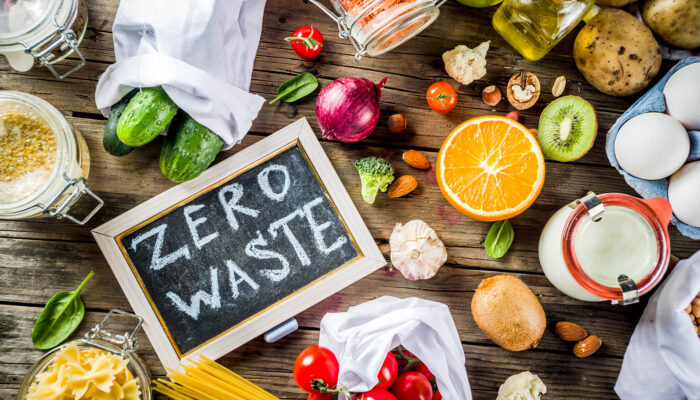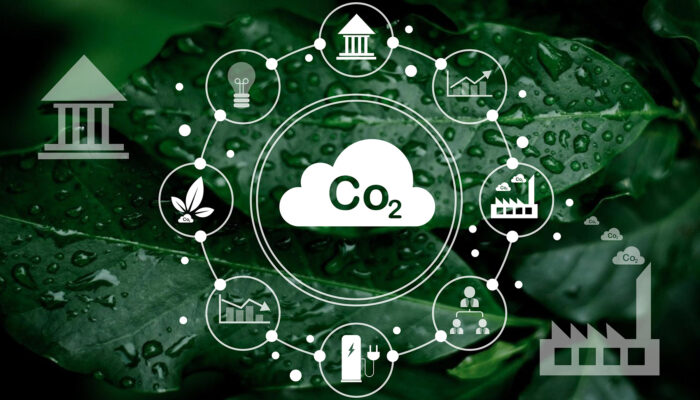The global appetite for animal products is projected to increase significantly in the coming decades, with profound implications for the food industry, public health, and the environment. By 2050, meat and dairy consumption will surge by an estimated 76% from 2005 levels.[1]
Meat and dairy production is a major driver of climate change, responsible for around 14.5% of global greenhouse gas emissions. It also contributes over 90% of ammonia, 37% of methane, and 65% of nitrous oxide emissions[2]* while consuming 30% of all land and 8-15% of water resources.[3]
The surveillance of animal health in massive herds is another pressing concern. As farms manage increasingly larger populations of animals, the consequences of infections within these immense herds could be catastrophic, especially as the imperative to reduce antibiotic usage grows. The close cohabitation of high-density animal populations and humans in some regions further complicates this scenario, elevating the risk of zoonotic disease transmission.
In light of these mounting challenges, a growing cohort of start-ups are leveraging new technologies such as AI and IoT to enhance the management of livestock. This approach leads to improved animal welfare, optimised resource utilisation, and the facilitation of more efficient and sustainable farming practices. These solutions are becoming more and more critical as the livestock sector grapples with growing public pressure and stricter regulations to curb carbon emissions.
Optimising farm resources
Farmers find themselves under increasing pressure from multiple fronts. Input costs have risen roughly 80% and 250% in recent years.[4] Additionally, concerns are mounting around the threat of livestock diseases and the effects of stricter regulations aimed at reducing carbon emissions. To optimise yields, resources, and profitability, many farmers are turning to innovative Agritech solutions. According to a recent McKinsey survey, 39% of farmers are eager to adopt advanced farmer management solutions into their operations.[5]
AgriWebb, founded in 2014 by fifth-generation Australian farmers, offers a comprehensive livestock management software platform. The company’s solution transforms daily on-farm data into invaluable business insights, empowering farmers to enhance their efficiency, profitability, and environmental sustainability. Everything, from livestock and paddock information to full-task and inventory management, is integrated into a single platform. In October 2022, Agriwebb raised an additional $6.7 million in its Series B funding round, bringing the total for this round to $29.3 million.[6]
Another leading player in the space is poultry-tech start-up Pitik. The company provides smart IoT devices and an AI-powered farm algorithm to help Indonesian farmers improve their efficiency and cultivate healthier, halal-certified chickens with full traceability. Pitik’s solution also empowers farmers to sell their chickens at higher prices by facilitating supply-demand alignment with end-buyers. Pitik raised $14 million in a Series A funding round last year, led by Alpha JWC Ventures.[7]
Improving sustainability
The contribution of livestock systems to greenhouse (GHG) emissions is driving the implementation of more stringent environmental regulations and compelling the sector to undergo a fundamental transformation. In the UK, recent developments such as the Clean Air Strategy and interpretations of Farming Rules for Water (FRfW) have garnered significant attention due to their potential restrictions on livestock slurry and manure management.[8] Australia and the EU have introduced similar regulations.
Governments worldwide have also established programs incentivising farmers to embrace regenerative and climate-friendly practices. However, accessing these incentive programs is a significant challenge for many farmers. Registration processes can be cumbersome and complying with the subsequent regulatory requirements incurs additional costs. Some incentive schemes allow for the aggregation of carbon credits across multiple agricultural enterprises. This aggregation process can be entrusted to a proficient third party well-versed in navigating the complexities of the regulatory landscape to reduce barriers to entry for farmers.[9]
Agriwebb provides farmers the means to connect with various sustainability programs, streamlining access to opportunities and revenue streams driven by sustainability initiatives. It also offers a suite of solutions designed to assist farmers in managing their resources, such as water. The company also expanded its commitment to sustainability by securing two USDA Partnerships for Climate-Smart Commodities grants led by Trust in Food and American Farmland Trust.
Connecterra, a provider of predictive intelligence systems to optimise farm productivity, has developed an impact forecast-validated model called the Farm Emissions Optimisation (FEO) model. This innovative model marks a significant milestone in quantifying farmers’ ability to make informed decisions that lead to reduced CO2 emissions.[10]
UK and US-based Breedr has developed a precision livestock trading and analytics platform and app that helps farmers capture data to improve their livestock productivity and reduce carbon emissions by up to 28% per animal.
Gaining complete visibility across operations
Several start-ups are pioneering innovative IoT-based solutions that empower farmers with in-depth insights into their livestock operations. Melbourne-based Gallagher has developed an innovative virtual fencing technology called eShepherd. The eShephard technology centres around a solar-powered, GPS-enabled neckband designed for livestock. After attaching and scanning neckbands, critical livestock data is transmitted to the eShepherd app. Farmers can use this data to fine-tune feed management, adapt grazing strategies, and track livestock whereabouts in real-time. The neckband also enables farmers to exercise control over the livestock movement keeping them within boundaries.
Across the Tasman Sea in New Zealand is Halter. The start-up’s solar-powered smart cow collars and app allow farmers to remotely shift, virtually fence, optimise and manage pasture grazing, and proactively monitor the health of their dairy herds at all times. Halter recently raised $50 million (NZ $85 million) in a funding round led by U.S.-based Bessemer Venture Partners.[11]
Indian dairy-tech start-up Stellapps harnesses IoT to deliver a comprehensive, end-to-end solution for digitising the dairy supply chain. The company’s holistic approach encompasses a wide array of offerings, including cattle monitoring, milk procurement, cold chain management, and versatile software solutions. Another noteworthy player in this space is Hungarian start-up Agroninja, which has developed Beefie3D to calculate the weight of cattle with 95% accuracy. The solution uses a digital scale equipped with a 3D camera that attaches to an Android smartphone.
Investing in a healthier, more sustainable tomorrow
The livestock management software market presents compelling opportunities for investors as population growth spurs demand for meat and dairy and intensifying regulatory measures push farmers toward more resource-efficient practices. Farmers, facing soaring input costs and the need to reduce emissions, will increasingly turn to Agritech solutions to transform their operations. The availability of carbon schemes will only further encourage the adoption of such solutions.
While the livestock management space remains nascent, the market is expected to be worth $3.6 billion by the end of 2023 and investments are on the upswing. After a modest $1.2 billion in 2022, investments hit $875 million in the first half of 2023, annualising to $1.75 billion.[12]** This upsurge reflects growing enthusiasm among investors and will spur innovation in the coming years.
Learn more about us
View our transactions
*[2] Anne Mottet, FAO, unpublished
**[12] Pitchbook










